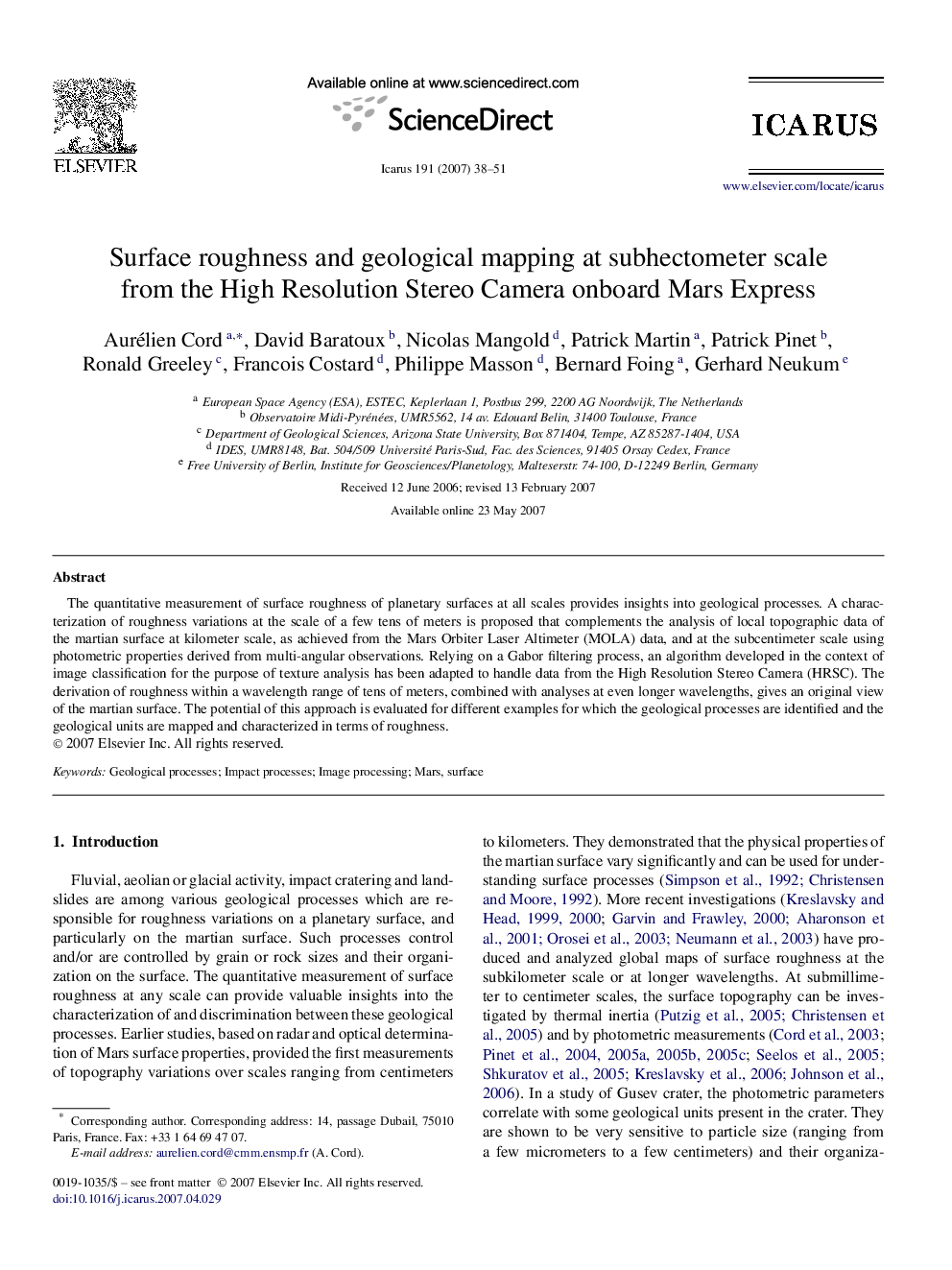| Article ID | Journal | Published Year | Pages | File Type |
|---|---|---|---|---|
| 1775199 | Icarus | 2007 | 14 Pages |
Abstract
The quantitative measurement of surface roughness of planetary surfaces at all scales provides insights into geological processes. A characterization of roughness variations at the scale of a few tens of meters is proposed that complements the analysis of local topographic data of the martian surface at kilometer scale, as achieved from the Mars Orbiter Laser Altimeter (MOLA) data, and at the subcentimeter scale using photometric properties derived from multi-angular observations. Relying on a Gabor filtering process, an algorithm developed in the context of image classification for the purpose of texture analysis has been adapted to handle data from the High Resolution Stereo Camera (HRSC). The derivation of roughness within a wavelength range of tens of meters, combined with analyses at even longer wavelengths, gives an original view of the martian surface. The potential of this approach is evaluated for different examples for which the geological processes are identified and the geological units are mapped and characterized in terms of roughness.
Related Topics
Physical Sciences and Engineering
Earth and Planetary Sciences
Space and Planetary Science
Authors
Aurélien Cord, David Baratoux, Nicolas Mangold, Patrick Martin, Patrick Pinet, Ronald Greeley, Francois Costard, Philippe Masson, Bernard Foing, Gerhard Neukum,
